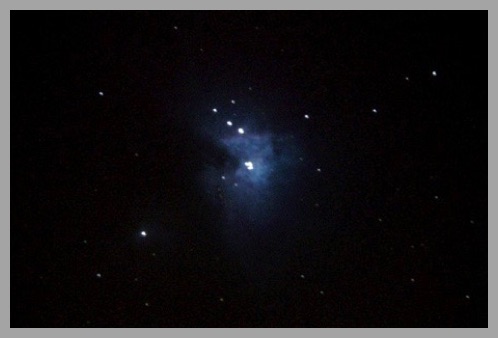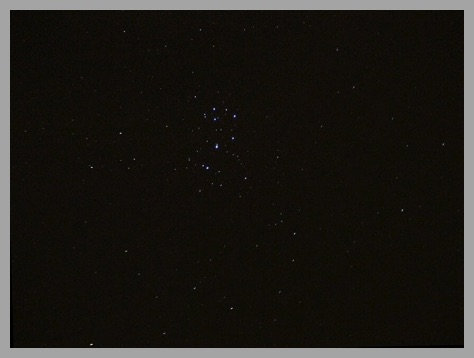Deep Space Images
The images on this page are of objects well outside our solar system.
Orion Nebula

This was my first attempt at deep sky imaging. Taken on Jan 3, 2004, this is the Orion Nebula.
The Moon was visible so the contrast of the nebula against the sky wasn't great and I couldn't see the object on the camera's LCD screen before I snapped the shutter.
I think it's not bad for a blind try!
The Orion Nebula is an area of dust and gas where new stars are being formed. In the very center of the nebula are 4 stars called “The Trapezium”.
Below are some images of the nebula that I took in early 2012 with a newer “point and shoot” Canon ELPH Powershot 300HS camera. These are single 15-second exposures.


Orion Constellation

The three stars in the middle of the photo that are lined up diagonally from lower left to upper right are “Orion’s belt”.
The nebula seen in the above photos is located in the lower center of the photo where you can see three “stars” lined up vertically.
The larger star slightly above and to the left of the center of the photograph is named Betelgeuse (some pronounce it as “beetle juice”). It is classified as a red giant and if it sat in the place of our sun, the surface of Betelgeuse would be beyond the orbit of Jupiter.
Pleiades Constellation

The Pleiades are also called "The Seven Sisters" and visible in the Norther Hemisphere from November to mid-March.
In ancient times when skies were darker, this constellation was considered to be an eye test. Each of the 7 stars visible with the naked eye has a slightly different brightness, so if you could see all seven stars you were said to have "perfect" vision. If you could see 6, your vision wasn't quite perfect. If you could see 5 then your vision was slightly worse than "not quite perfect, and so on.